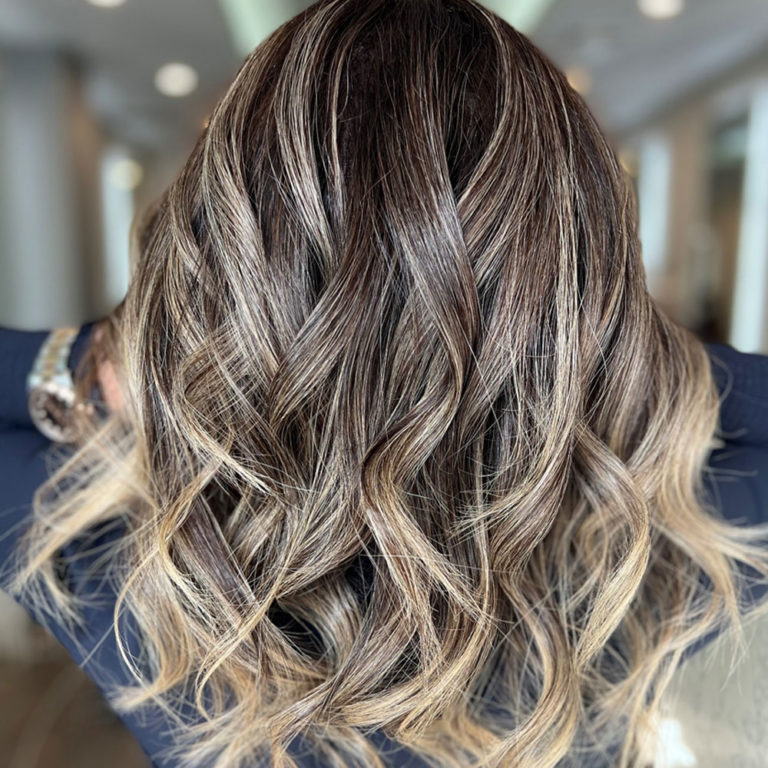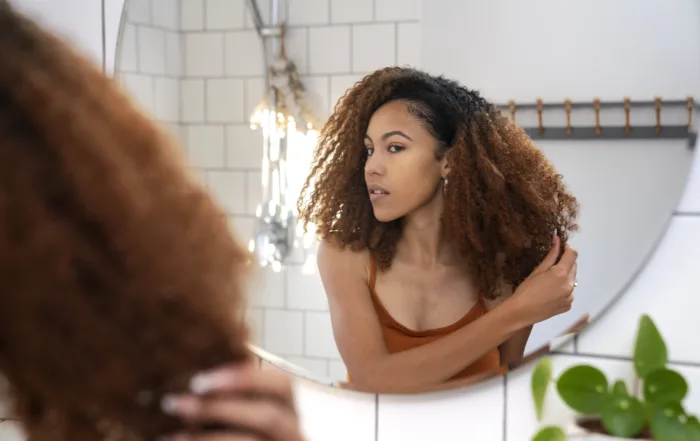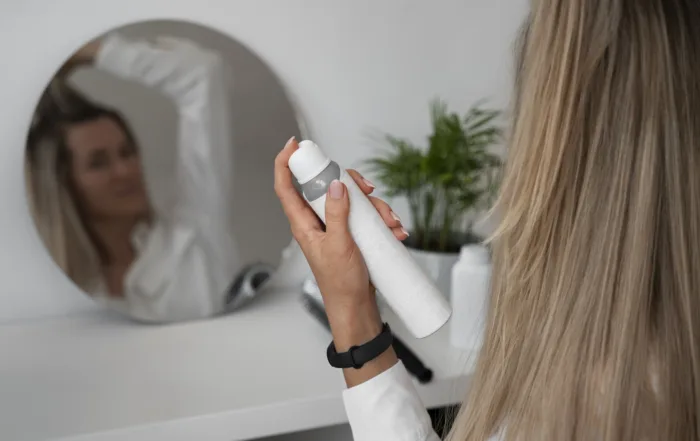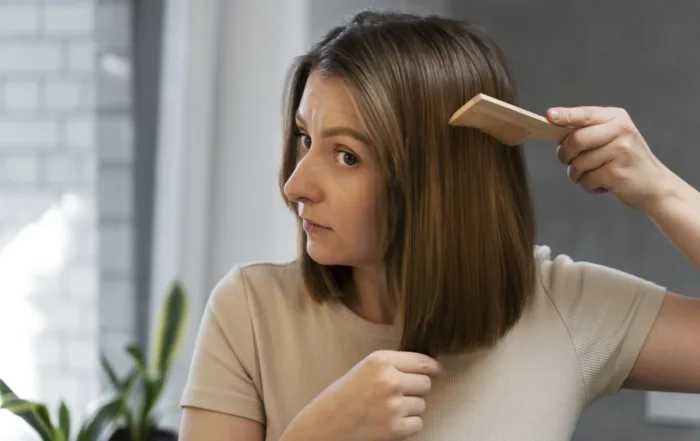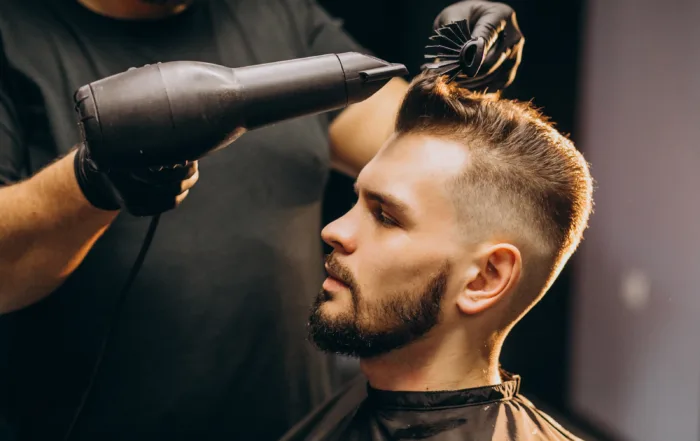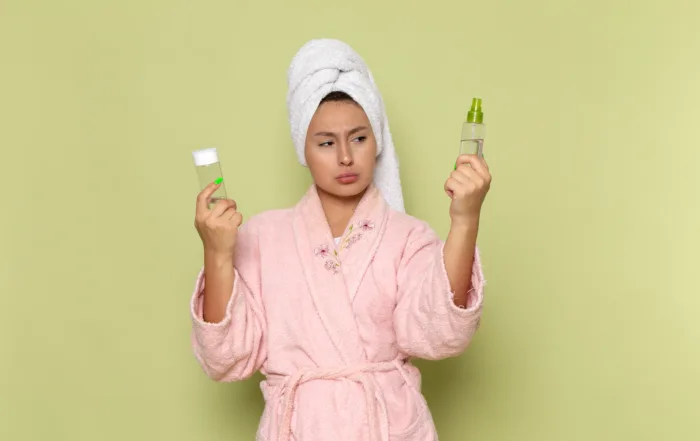Balayage: a term that resonates with beauty enthusiasts, stylists, and those in pursuit of the perfect hair highlights.
This French technique, whose name means “to sweep” or “to paint,” allows for a sun-kissed natural-looking hair color.
It’s customizable, versatile, and suitable for all hair lengths, colors, and types. But what exactly goes into achieving the flawless, gradient effect of balayage? Let’s brush through the strands of this sought-after hair coloring method, offering a step-by-step guide to its techniques, and tips for maintaining that enviable glow.
A Brush with History: The Origins of Balayage
Before we dive into the how-to, let’s take a quick look back at where balayage began. Originating from France in the 1970s, balayage was a divergence from the traditional foiling techniques used for highlights.
The method aimed to create softer, more natural-looking highlights that easily blend into the base hair color, mimicking the natural lightening effect of the sun. Over the decades, balayage has evolved and taken the beauty world by storm, becoming a staple technique for achieving dimensional and vibrant hair colors.
The Balayage Blueprint: Understanding the Technique
Balayage is an art form, requiring a keen eye for color, understanding of hair structure, and precision in application. The technique involves painting color onto the hair in sweeping motions, starting from the mid-lengths and moving towards the ends. The key is to apply the color more heavily at the ends, creating a seamless, natural-looking gradient. Unlike traditional highlights, balayage does not use foil to saturate the strands. Instead, the open-air application allows for a softer, more blended result, offering a low-maintenance solution for those seeking dimension without drastic change.
Step-by-Step Guide to Achieving Balayage
- Preparation: Start with dry, untangled hair. Choose your color or colors based on the desired effect, keeping in mind your natural hair color and skin tone.
- Sectioning: Divide the hair into manageable sections. This helps in achieving an even application and allows for more control over the intensity of the highlights.
- Mixing the Color: Prepare your lightener or dye according to the instructions. For balayage, a thicker consistency is preferred to prevent dripping and to allow for precise application.
- Application: Using a balayage brush, apply the color with sweeping motions, starting a few inches away from the roots. The strokes should become heavier towards the ends of the hair. Use a balayage board underneath the strands for support, if necessary.
- Processing: Let the color develop for the time specified by the product. Balayage often requires less processing time than traditional highlights due to the open-air technique.
- Rinsing and Toning: Wash out the color and, if desired, apply a toner to achieve the perfect shade and enhance the natural-looking finish.
- Aftercare: Invest in color-protecting hair care products. Use shampoos and conditioners designed for colored hair, and consider incorporating a hair mask into your routine to keep your balayage looking fresh and vibrant.
Customization and Creativity: Balayage Variations
Balayage’s beauty lies in its versatility. It can be adapted to suit any hair color, from blonde and brunette to red and black, and everything in between.
Techniques such as “foilyage” combine the traditional foils with balayage for brighter, more pronounced highlights. Meanwhile, “ombre” and “sombre” (soft ombre) take the gradient effect to new lengths, offering a bolder transition from dark to light.
Keeping Your Balayage Beautiful: Maintenance Tips
While balayage is lower maintenance than traditional highlights, preserving the health and color of your hair is key to keeping your highlights looking salon-fresh.
Regular trims, minimal heat styling, and the use of UV protection hair products can go a long way in maintaining your balayage’s brilliance. Additionally, touch-ups are typically needed only every 3-4 months, making it a convenient option for those with busy schedules.
Wrapping It Up: The Art of Balayage
Mastering the technique of balayage can transform not only your hair but also how you feel about yourself. It’s a subtle yet powerful way to refresh your look, adding depth, dimension, and a touch of sun-kissed radiance.
Whether you’re a stylist looking to hone your skills or a DIY enthusiast eager to try something new, the world of balayage is waiting for you to paint your story.
With its rich history, detailed technique, and endless possibilities for customization, balayage stands out as a timeless hair coloring method. As we sweep through the colors and contours of this beloved technique, it’s clear that the art of balayage is more than just hair coloring—it’s a statement of style, individuality, and creativity.
So grab your brush, and let’s paint the town, one highlight at a time!
I hope you found this guide insightful and that it sparks your excitement to either try balayage for yourself or perfect your technique further.
Remember, the best creations often come from a blend of knowledge, creativity, and a bit of experimentation.
If you’re ready to transform your hair into a masterpiece of light and shade, it’s time to turn your dream into reality. Book your balayage appointment with Numi Hair Salon today, where our expert stylists are eager to tailor the perfect color blend to complement your unique style and personality. Don’t just imagine the possibilities—experience them.


